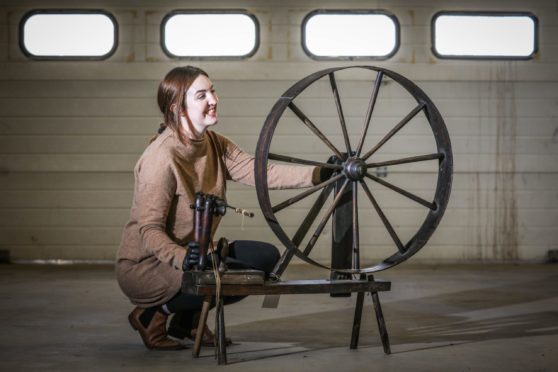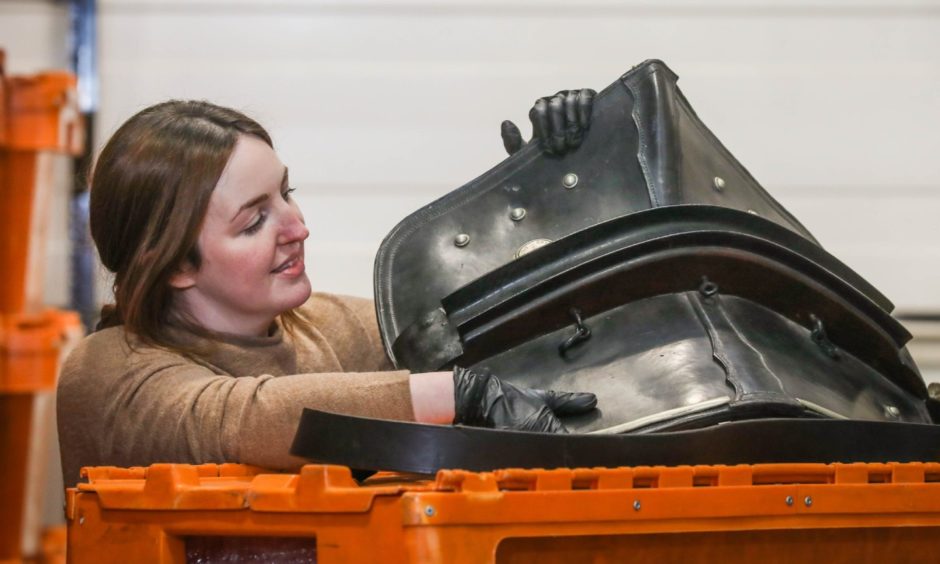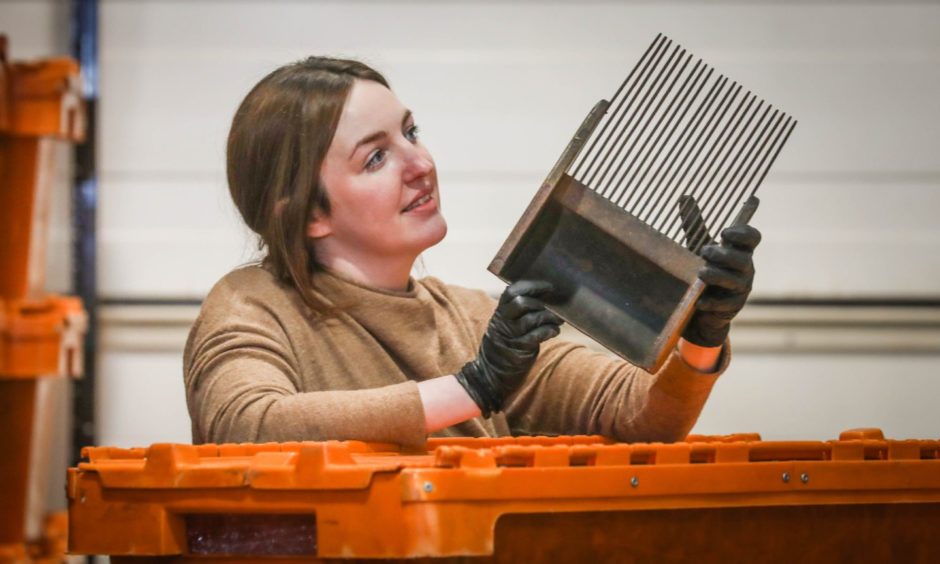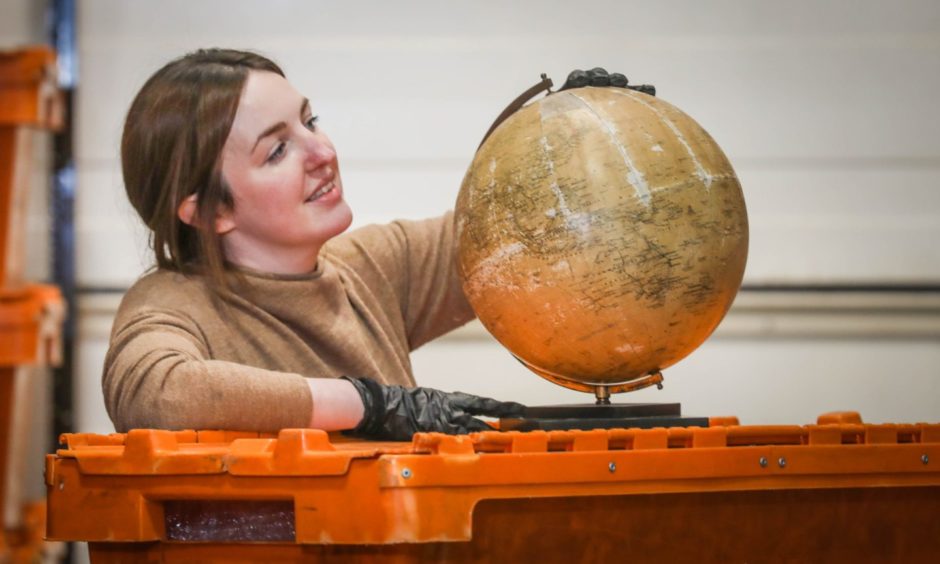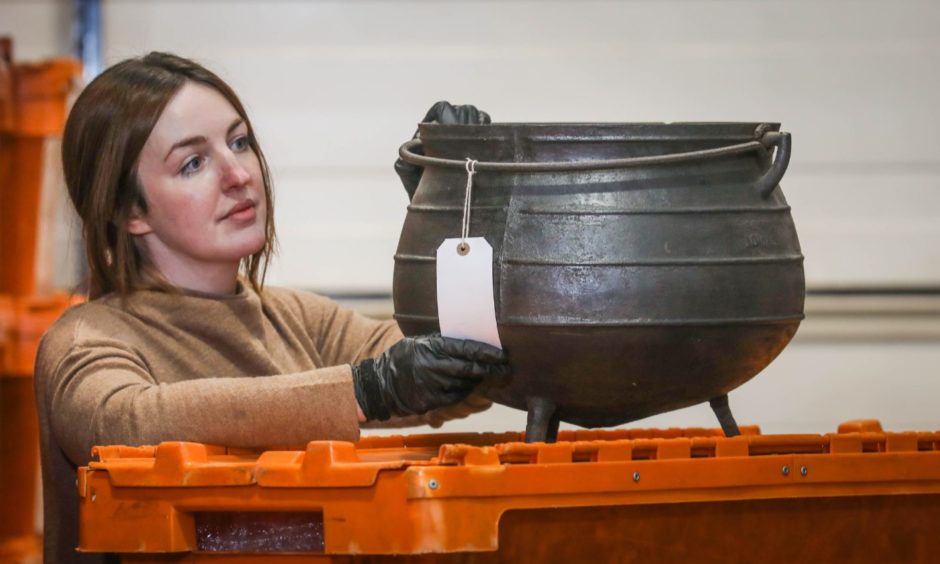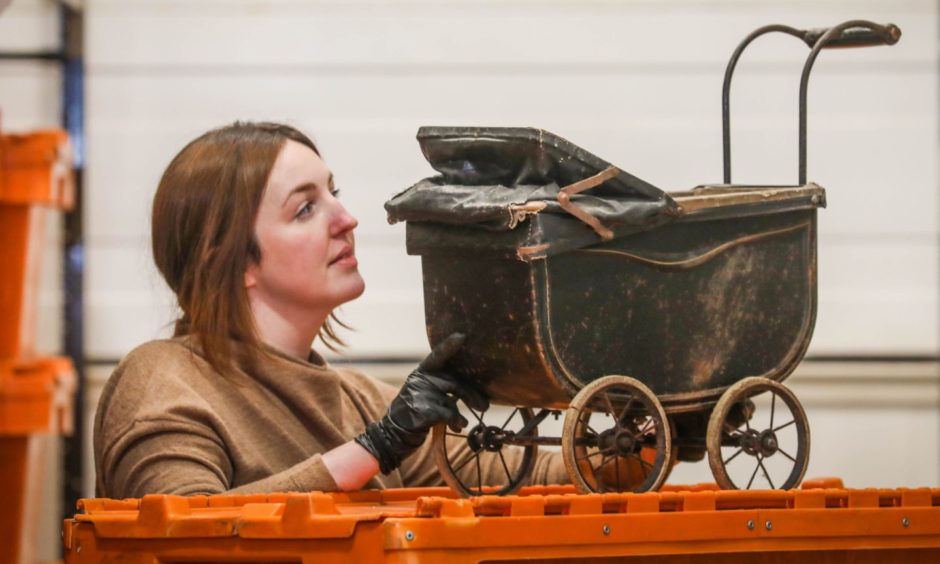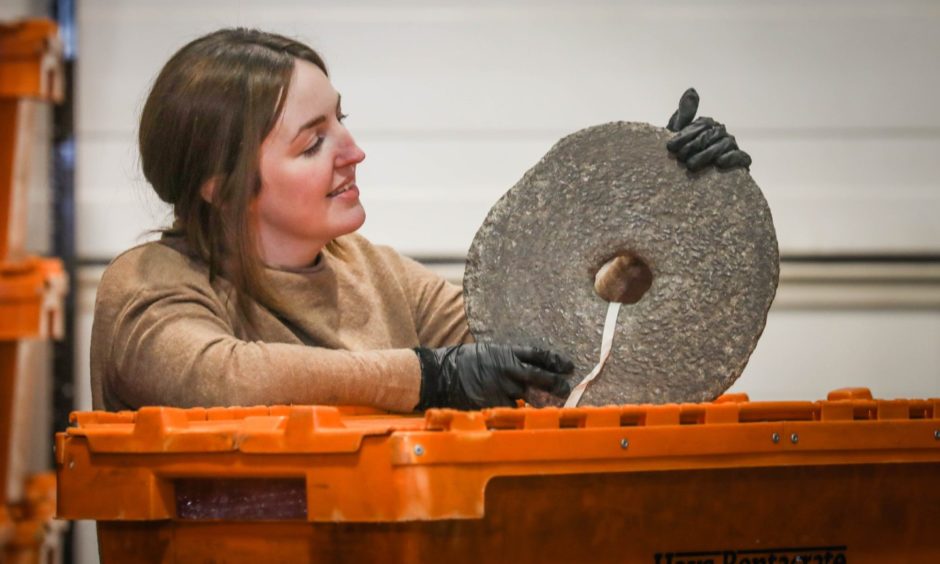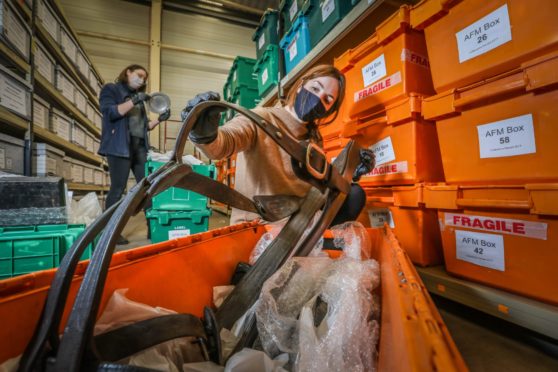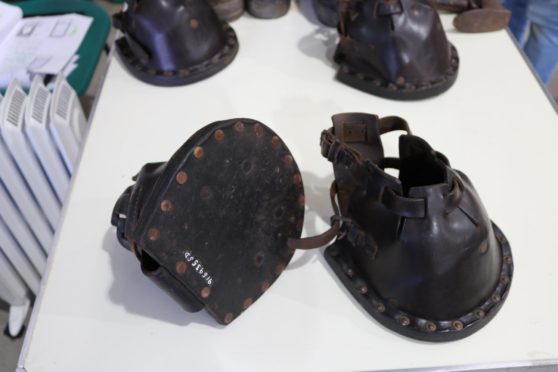The National Trust for Scotland broke ground on the new home of the Angus Folk Museum earlier this month, as part of its revamp of Montrose’s House of Dun.
Brick-and-mortar changes are under way in the Dun Estate’s courtyard, which will house the museum’s collection. Meanwhile, a few miles down the road, the objects themselves are getting dusted off and dolled up for display.
In a warehouse in Brechin, NTS project conservator Lyndsay MacKinnon is working behind the scenes to help bring out the best of Angus’s rich social history. But what exactly does that entail?
Unsung heritage heroes
“There’s two types of conservation,” Lyndsay explains. “The first is preventative, which is looking after the environment that the objects are stored in to make sure they don’t come to any harm.
“Then there’s remedial conservation, which is what I’m doing here. It’s more hands-on, doing small repairs to objects to help preserve them.”
In her role at the House of Dun project, Lyndsay is checking over all the objects to make sure they’re suitable for display. She will then organise their movement and installation.
It sounds simple enough – but with 5,000 objects in the warehouse and just two others to help her, it’s no small feat.
“There’s 5,000 objects and we’re going to be displaying around 1,500 of those,” she says. The job of whittling down which ones to display fell to a curator and design team, showing just how much expertise goes into such projects.
“They chose stories that they wanted to tell, and they’ve picked out objects to help illustrate these stories.”
But for Lyndsay, a specialist in the conservation of furniture and decorative arts, it’s about zooming in on details rather than the bigger picture. And the Angus Folk Collection has offered her countless plates to spin.
“One of the best things about being a conservator is that you’re always solving a different problem,” she says.
“For example doing remedial conservation, there are no two objects that are the same, or that need the same kind of treatment. Projects like this all throw up their own quirks, so it’s never boring.”
Bumps in the road
One of the problems Lyndsay deals with regularly is the logistics of moving fragile or large objects.
“In the collection we have a big, black Victorian hearse, and that’s obviously going to be quite a tricky object to move.
“We’re having to use a specialist, sports car company that move expensive cars around the country to move this hearse, so it doesn’t suffer from vibrations when it moves.
“It certainly won’t be going on the back of a horse and trotted down from the stores to Dun!”
The right amount of dirt
Contrary to what some may believe, conservation isn’t all about restoring an object to its original form. Lyndsay explains that there’s an art to preserving the story of an object while making it suitable for display.
“Because it’s an agricultural and social history collection, most of the condition is used and that’s part of its story. So you wouldn’t want to restore it and have it looking brand-new, because then you’d almost be removing its story from it.”
On a practical level, this amounts to a lot of very careful cleaning.
“We clean the objects with conservation brushes and vacuums initially,” Lyndsay explains.
“You wouldn’t wet-clean things. Sometimes we use chemicals as well – but these wouldn’t be your household cleaners!”
“It’s an object that I never even knew existed, let alone when you see the craftsmanship that’s gone into it. It’s quite incredible.”
Lyndsay MacKinnon, NTS Project Conservator
It’s clear that being a conservator for a heritage project like the Angus Folk Museum is a labour of love. Lyndsay admits it’s a “hidden job that people don’t know exists”, but she’s happy for the objects and their stories to be in the limelight instead of her.
“You get look at objects and be hands-on with things you would never get to see, and go round historic houses when there’s no one in! So it’s quite a fun job,” she says.
From the horse’s mouth
Asked if she has any favourite objects in the Angus Folk Collection, she enthuses: “I found some little leather lawn-shoes for a horse! So these go over a horse’s shoes so that they don’t put marks on a lawn.
“They’re the cutest things, these little leather booties for horses. I just think they’re really sweet.
“It’s an object that I never even knew existed, let alone when you see the craftsmanship that’s gone into it. It’s quite incredible.”
In an age of instant gratification and rampant consumerism, the quiet skill and patience required for a conservator’s job seems to be in need of conservation itself.
Lyndsay says there are only a few places left in the UK which offer the necessary training. But it’s clear that for her, all the finnicky and fiddly bits are worthwhile.
“For some objects, they’re valuable because of the materials they’re made from, or the craftsmanship that was used to produce or paint them,” she says.
“With a social history collection like this one, it’s valuable because it tells you how people used to live. It helps you imagine what life was like and how people overcame problems, and innovated in their own ways.
“There’s value to helping keep those things so that people can see them in the future and understand.”
